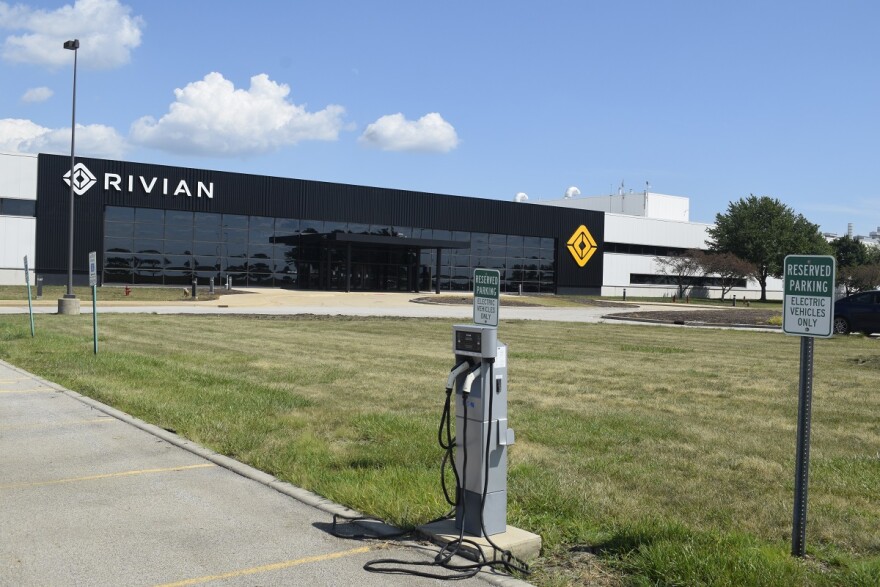The future of driving will be a system of systems: Cars talking to other cars talking to road sensors talking to traffic signals talking to nearby businesses.
But before that happens, the companies at the center of the automated mobility revolution need to talk to each other. And that’s where the Illinois Autonomous Vehicles Association (ILAVA) comes in.
ILAVA’s founding members include State Farm, Rivian, and Morton-based AutonomouStuff, some of Illinois’ biggest players in autonomous vehicles. That’s in addition to several tech and logistics leaders in and around Chicago.

“We have all these companies that are doing stuff, but they’re not doing it in a cohesive manner. They’re doing a lot of these one-off projects,” said Jerry Quandt, ILAVA’s executive director. “The confluence of all these players really gives us (in Illinois) a leg up in owning this overarching space.”
WGLT spoke with Quandt in Chicago during a recent event hosted by ILAVA, focused on EV charging infrastructure. One of the panelists was Jim Thomas, vice president of corporate development at Rivian, which plans to build its highly connected electric vehicles and batteries at its Normal manufacturing plant.
Automation and electrification are both considered the future of mobility. Autonomous vehicles are just one part of that future.
“That’s cool, that’s great technology, but that's not utilizing the technology to its fullest potential,” Quandt said. “Automating technology is when that vehicle is nothing more than a node on a mobility network, talking to other vehicles, talking to infrastructure, and vice versa, and … moving things—whether it be people, or goods, or agriculture—from one point to another. That’s automated mobility.”
“A key part of that is really building a system of systems around connectivity of all these things,” Quandt said. “There’s nobody taking a lead in that. That’s what our association is doing. We’re taking a lead on that, and giving Illinois a leg up to have a much more strategic play in the national and international conversation about mobility.”
Insurance Business
The Interstate 74 corridor already has several major players, including State Farm and Rivian.
As the country’s largest auto insurer, it’s no surprise State Farm is trying to play a leadership role in how automated mobility will change the insurance business. A State Farm executive told WGLT last fall that the company’s mindset around autonomous vehicles had shifted—initially seeing it as a threat but now sensing an opportunity.
First, there are questions.
“Who's gonna be covered? Is it the vehicle? Is it the rider? Is it the company? Is it the system? All those things need to be figured out,” Quandt said. “They want to understand that. But they also know that as we connect the vehicles to infrastructure, there’s gonna be a lot more information about the structure of the infrastructure.”
Insurers want to better understand the different coverage realities that will occur with automated mobility. They’ll be more dynamic, Quandt said. Instead of just using your age and driving history to set the price of an insurance product, how does that change if an insurance company knows the conditions of the sensor-covered roads you drive on, or your day-to-day driving behavior?
“That’s the sort of level of detail we’re going to get to. And that’s where insurance companies are looking, is how do we start to create new coverage scenarios that optimized coverage and limit our risk? It’s a whole brave new world, and that’s where looking not just at the vehicle but all the factors that are going to be involved is really a much richer territory and the long tail they’re looking at.”
Listen to WGLT’s full interview with Quandt below:
People like you value experienced, knowledgeable and award-winning journalism that covers meaningful stories in Bloomington-Normal. To support more stories and interviews like this one, please consider making a contribution.



